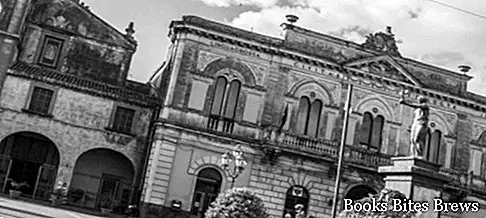What to see in Linguaglossa, itinerary including the main monuments and places of interest, including the Church of Santa Maria delle Grazie and the Capuchin Convent.
Tourist information
Located on the northern slopes of Etna, Linguadossa is surrounded by vineyards and dominated by a lush pine forest.
It is a small village whose name derives from the fact that it was built over a "large tongue" of volcanic lava, formed following an eruption of Etna which occurred in the seventeenth century,
Due to its proximity to the volcano, the landscape surrounding the resort has a wild aspect, but despite this it is possible to make interesting excursions on the slopes of Etna.
Historians attribute the foundation of the town to the Normans while, subsequently, Linguadossa was ruled by the feudal lords of the area until the eighteenth century, when it became part of the Kingdom of the Two Sicilies.
What see
Among the noteworthy architectural monuments, we must mention the churches, including the Mother Church of Santa Maria delle Grazie, located in the historic center and dating back to the early 1600s.
This cult building has a fairly austere facade, characterized by the alternation of lava stone, dark in color, with sandstone, with a light appearance.
The interior with three naves is enriched by the numerous pictorial works of the nineteenth century and by the remarkable wooden choir, meticulously worked and dating back to 1729.
The eighteenth-century Church of San Francesco di Paola, decorated in Baroque style and equipped with a single nave interior, contains oil-painted canvases depicting scenes from the life of San Francesco, works of considerable artistic value, while next to the building there is City Hall.
The Capuchin convent, built in the seventeenth century together with the adjacent Church of the Immaculate Conception, has an interior with two naves with side altars.
Among the many works of art preserved inside, dating from epochs between the eighteenth and nineteenth centuries, include the wooden statue of the Immaculate Madonna and that of San Francesco, in addition to the paintings depicting the Souls of Purgatory and the Madonna with Franciscan saints.
Recommended readings- Mazara del Vallo (Sicily): what to see
- Trapani (Sicily): what to see
- Randazzo (Sicily): what to see
- Milazzo (Sicily): what to see
- Sicily: Sunday day trips
The Dominican Church, built around the middle of the twentieth century, is also worth visiting.
The church was built in the same place where the seventeenth-century Church of San Nicolò was located, of which it is still possible to admire the lava stone portal and the statue of San Nicolò.
Inside the Church of the Dominicans there are numerous works, including an altarpiece, depicting the Madonna del Rosario with San Domenico and Santa Caterina da Siena, twelve eighteenth-century wooden tablets depicting the Holy Mysteries of the Rosary.




